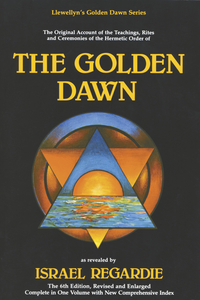“Help me, Obi Wan Kenobi. You’re my only hope.”
Do you remember the first time you heard that line? I do. There had been an enormous line around the theater in San Diego. A friend and I walked to the front of the line and asked if there were any tickets left for the current show. “Only in the front row,” we were told. So the first time I saw Star Wars was in the front row of an enormous theater.
I had always enjoyed science fiction movies, but I had never seen anything like this. And here was a scene that was pivotal to the plot. The trash can-like robot, R2-D2 (Supposedly named after a request at an editing session during the making of Lucas’ earlier film, American Grafitti. Lucas heard editor Walter Murch ask for “R2D2,” short for “Reel 2, Dialog 2.”), projects an image of a princess, ending with this request. That request would start the iconic journey of Luke Skywalker to win the rebellion against the evil empire and in the process become a Jedi Knight.
And that request was a lie.
George Lucas knew it was a lie. He named this episode of the series of films “A New Hope.” In fact, Obi Wan dies (transcends?) later in the film. Clearly, he was not the only hope.
Our Only Chance
Star Wars is not the only film to use this ploy. It’s a standard plot point in countless movies, novels, TV shows, and comic books.
We have to run through the fire, swim underwater for 100 yards, climb up that sheer mountain cliff and take over that fortress with 1,000 heavily-armed guards. It’s our only chance!
We have to cross the energy beams from our ray guns.
I thought you said not to. Something about destroying the universe…
Well, it’s our only chance!
We’re in this lifeboat and don’t know when we’ll be rescued. There’s not enough food and water for everyone so someone will have to volunteer to leave. It’s our only chance!
Really? It’s your only chance? I don’t think so. I think you just don’t have enough creativity to figure out alternatives.
Magick: The Science of Alternatives
Unfortunately, this “It’s our only chance!” attitude seems to pervade society. People end up thinking they only have one way to do things. In NLP (Neuro-Linguistic Programming), however, there is a presuppositions that in any system, the person with the most flexibility will control the action in that system.
In the example of Star Wars, Princess Leia was wrong. She thought Obi Wan was her only hope and upon first meeting Luke her question, “Aren’t you a little short for a Stormtrooper,” indicates her dismissal of him. But she is flexible enough to accept his help and that allows her to continue to achieve her goal (success of the Rebellion) even after Obi Wan’s death. If she wasn’t flexible, she would have given up right then: her “only hope” was gone.
A lot of people who talk about NLP really don’t understand it. They think it is a bunch of simple tricks to control people. In actuality, when working with a person to help them achieve desired changes, it’s important to observe that person constantly. During NLP trainings you are even taught to observe a person for even tiny physical changes. By mastering NLP, when you observe a person and see that one technique isn’t working, you can effortless slide into another technique. The NLP practitioner has a wide set of techniques and is flexible enough use the ones that are effective with any particular individual.
The practice of magick also requires flexibility—or at least flexibility within the system of magick you are following. That’s one of the vital functions of every magician’s lists of correspondences.
- If you’re doing herb magick and don’t have one herb, you will have a list of correspondences that will allow you to substitute a different herb.
- If you’re raising energy to do magick through breathwork, and believe it’s not successful, you can substitute a different technique, such a dancing or visualization.
- If you’re doing color magick and don’t have a red candle, perhaps an electric light with a red bulb or a red filter over a clear bulb will work.
The more flexibility you have, the greater your chance for success. This goes for every area of your life.
Flexibility Within the Golden Dawn
I have been privileged to participate in several different groups that are either associated with the “Golden Dawn Current” or claim to be the Golden Dawn. Some of them have been great. Others, well, not so great. In some instances, the problem is the same as the disagreement between Traditional Tantrics and Neo-Tantrics.
In Neo-Tantra, many people believe that the important aspect of Tantra is working with spiritual energy, often raising it through means of Tantric sexual practices. Some Neo-Tantrics discount the Traditional Tantrics for focusing on other aspects of Tantra including philosophy, psychology, physiology, magick, science, etc. Similarly, some Traditional Tantrics discount the Neo-Tantrics by saying they’re only interested in the energy and the sex.
So which side are you on? Are you for the Traditional Tantrics or Neo-Tantrics?
If you picked one or the other…Gotcha!
Flexibility yields success. Why limit yourself to either? Think of the advantages if you can adopt the best of the Traditional and the Neo! Flexibility is where it’s at!
So how does this relate to the Golden Dawn tradition?
In February I’ll be attending the famous Pantheacon Convention in San Jose, California, and one of the workshops I’m giving is on why the Lesser Banishing Ritual of the Pentagram is still important. The LBRP, of course, is one of the earliest rituals taught within the Golden Dawn and has been used or adapted by, well, just about everyone.
Now, go to a site like YouTube and look at the performances that some people have made showing them doing the LBRP. My judgement of most of this performances is anywhere from horrible to embarrassing.
Close your eyes and just listen to them! Is there any energy? No. Is there any excitement? No. In most of the cases they sound like they’re in the middle of a funeral or trying to lull a baby to sleep. They’re like the Traditional Tantrics who have learned the concepts but haven’t learned to work with the energy.
If all you have are the words and motions, all you’re doing is wand waving and word warbling. That’s not magick; that’s theater…and bad theater at that. If all you want to do is theater, fine. At least do good theater. There’s nothing wrong with doing theater and perhaps we need more of it in our lives.
But it’s not magick.
To compare with the two types of Tantrics, you need to know the words, actions, visualizations, etc. (similar to the skills of the Traditional Tantrics) and how to generate, manipulate and direct magickal energy (similar to the skills of the Neo-Tantrics) to be an effective magician.
If you want to learn the words, actions, visualizations, etc. of the Golden Dawn Tradition, I would highly recommend a couple of books. First, there is Self-Initiation into the Golden Dawn Tradition by Chic and Sandra Tabatha Cicero (they are currently scheduled to be presenters at Pantheacon for the first time ever).
 This book will really take you, step by step, through all you need to know to work the Golden Dawn tradition. For a briefer introduction you might prefer The Essential Golden Dawn, also by the Ciceros.
This book will really take you, step by step, through all you need to know to work the Golden Dawn tradition. For a briefer introduction you might prefer The Essential Golden Dawn, also by the Ciceros. And of course, as the ultimate resource, you can always refer to Israel Regardie’s classic book titled The Golden Dawn.
And of course, as the ultimate resource, you can always refer to Israel Regardie’s classic book titled The Golden Dawn. Unfortunately, even if you read and memorize every page of these books you’d still only have part of the magickal whole that is the Golden Dawn. The other part, as I’ve described before, is the generation, manipulation, and direction of magickal energy. Books don’t really teach that. They can explain it, but learning such a skill from a book is like learning sex from a book. The real thing is different from a description!
Unfortunately, even if you read and memorize every page of these books you’d still only have part of the magickal whole that is the Golden Dawn. The other part, as I’ve described before, is the generation, manipulation, and direction of magickal energy. Books don’t really teach that. They can explain it, but learning such a skill from a book is like learning sex from a book. The real thing is different from a description!
Practicing with breathwork—as well as visualization and actions—while understanding that the goal of these practices is to control magickal energy will move you on your way to success. Working with feelings and experience, as well as knowledge, is what makes the complete Golden Dawn practitioner, one who can successfully perform magick.
Choosing Sides in the GD Blog Flamewars
If you have as much respect for the Golden Dawn tradition as I do—or even just a smattering of interest—you are probably as embarrassed and disheartened as I have been over yet the most recent set of GD blog flamewars.
For those of you reading this, the basis of the disagreement is that the late 19th century founders claimed to have been giving the right to start up (or restart) the Order by some entities known as the Secret Chiefs. These Secret Chiefs have been rather silent of late, but recently one contingent claims to have made contact with them. This, of course, allows them to imply (without saying anything) that they are the only real GD group around, that you can only be part of the real GD by joining with them, and that they have secret teachings from the Secret Chiefs that nobody else has. The other contingent claims that the Secret Chiefs weren’t real at all, just a pleasant fiction made up by the founders of the GD in order to give their new group legitimacy. Therefore, anyone can simply take the published information on the GD and work their own version of it, being just as legitimate as any other GD group.
So which position do you think is right? Are the Secret Chiefs real or were they a fake?
If you pick one side or the other…Gotcha!
In a post on his Gleamings from the Golden Dawn blog, Morgan Drake Eckstein proposes another alternative:
There is a third school of thought concerning the Secret Chiefs. And that school of thought is that it does not matter either way whether the Secret Chiefs existed, was in contact with Mathers and Westcott or not, still exist or not…none of this matters.
Now we’re getting somewhere by expanding the possibilities to three. So which position do you now think is right? Are the Secret Chiefs real, fake, or it doesn’t matter?
If you pick any one of the three positions…Gotcha!
Remember, flexibility is where it’s at! These three possibilities are three flowers in an enormous garden. Perhaps the Secrets Chiefs are real, but the founders made up their connection to them. Perhaps the Secret Chiefs can choose when to be real and when not to be real. Perhaps they are both real and unreal simultaneously. Perhaps they are only real if you need them to be real while you are on your spiritual path and if you don’t need them they remain unreal.
With flexibility you have lots of options. You can say, “Okay, I believe you and you,” instead of taking sides.
The Catch
So if you’re looking at potentially joining a Golden Dawn group—or at least following the practices and teachings of one group over another—how do you know which group is a legitimate Golden Dawn group? Certainly nobody wants to be “led astray.”
There is an old saying, “When the student is ready, the teacher will appear.” Well, this must have a corollary, that “When the student is ready to get deceived, the teacher of deception will appear.” Some people need to be led astray before they can find the path that’s right for them.
As a policy, I don’t recommend groups. However, there is something you can do to determine if a group is right for you. The solution, I believe, is found in the Bible, Matthew 7:16, “By their fruits ye shall know them” (American Standard Version).
For example, is a group clearly trying to do nothing more than accumulate power by bullying others? In another post, Mr. Eckstein reveals that he came up with an idea for a blog post, started to write it, then stopped because he feared it would be taken out of context “and used as evidence that I was flaming an aspect of Golden Dawn mythology. Which was not my purpose—I was merely using my Golden Dawn background (which I presume my readers share) to explain something else.”
He has good reason to think that might happen. It has happened to me. Mr. Eckstein ended up not making that post at all. It might have been interesting. We’ll never know.
So although I don’t recommend (or not recommend) groups, there is something I do recommend:
Do the work.
Ignore the claims and counter-claims. 100 years from now they won’t have made a bit of difference.
Do the work.
Get some of the books above and study them. Then…
Do the work.
And remember, the person with the most flexibility in a system will control the action in a system.








Awessome article.
May the Force be with you;-)
I love these articles you’ve been doing, they’re little golden nuggets. 🙂
Your perspectives on Magick are intelligent, insightful, accessible, and inspiring. As long as you keep writing, I’ll be reading!
Thank you all. I appreciate the feedback!
I agree completely. Flexibility is the key in all magickal pursuits. The Golden Dawn pulled traditional workings from many different cultures and combined them as well as adding more that they thought up. That’s the way nearly all modern magickal traditions have been formed. As the chaos magicians say, “If it works, keep it. If it doesn’t, get rid of it.”
Excellent post, DMK – thanks 🙂
You write, “This, of course, allows them to imply (without saying anything) that they are the only real GD group around” – Well, of course SOME groups DO actually say things like they are the only direct GD descendants – it’s right there on websites.
And they DO say you can choose our way and create yourself and immortal solar body or…not. As I have also pointed out on MOTO, this dualism has no part in the magical tradition. May your wonderful and much read words here get this message across more.
If any group wants you to accept/believe something without evidence or as a ‘truth’…walk away quickly.
THANKS:)